The Diminished Scale
Mathematically, there must be a finite number of scales, but scales seem pretty infinite to me. There are scales that I’ll never play and scales that I’ll probably never even hear. Even more so if you take into account cultures that use quarter-tones. Each scale connotes something different. This is unique to each person. When you hear a certain scale, you probably associate it with something. It could remind you of something you’ve heard before, or it could simply connote a certain feeling. The diminished scale is one of the defining sounds of jazz.
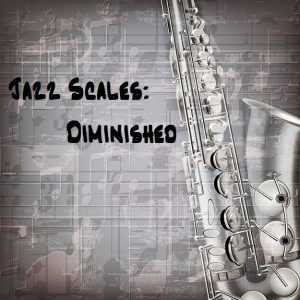
I remember the end of my freshman year at Indiana University, hanging out with some of my friends and watching videos on YouTube about the diminished scale. For some reason, the diminished scale sparked an interest in me; it stood out from everything else I was practicing at the time. The limits of practicing the diminished scale seemed endless. For the entirety of the summer between my freshman and sophomore years, the diminished scale was the central focus of my long practice sessions. And even now, some eight or so years later, the possibilities of manipulating the diminished scale still seem endless to me.
Scale Construction
The diminished scale belongs to a group of scales called symmetric scales. The scales in this group include the chromatic scale, the diminished scale, the whole tone scale, and the augmented scale. Symmetric scales have an even number of notes and repeated intervals or interval sequences. They also have limited transpositions. The major scale and the minor scales, and most other scales, need to be transposed into twelve keys to be practiced completely. The diminished scale only needs to be transposed into three keys. C, Eb, F#, and A are the same diminished scale; C#, E, G, and Bb are the same diminished scale; and D, F, Ab, and B are the same diminished scale. Lucky for us, this makes practicing the diminished scale a little easier. Instead of needing to practice the scale in all twelve keys, once you master the scale in three keys, you can play it in twelve keys. In other words, you get the same result with only 25% of the effort. Wait until we get to the whole-tone scale.
As I mentioned, symmetric scales utilize repeated intervals or interval sequences. In the case of the diminished scale, the repeated interval sequence is alternating half-steps and whole-steps. Thus, there are two diminished scales, depending on which interval (half-step or whole-step) you start with. We call these scales the “whole/half diminished scale” and the “half/whole diminished scale”. Some people also refer to the latter as the “dominant diminished scale”. The reason for this will become clear in a minute.


Keep in mind, this doesn’t mean that there are now six scales to practice (C, C#, and D for “whole/half diminished” and “half/whole diminished”). Take a look: the “C whole/half diminished” and the “D half/whole diminished” are the same scale. There are still only three varieties of the diminished scale.
Chord/Scale Relationship
Now that we know the construction of the diminished scale, we should figure out how it functions in jazz. In jazz education, we often talk about “chord/scale relationships”. The meaning of this phrase is intuitive. It simply means figuring out how each scale relates to each chord and vice versa. The two diminished scales function in different ways.
The “whole/half diminished scale” works over a fully diminished seventh chord. If you look at the scale, every other note is a part of the chord. The notes in-between act as leading tones to the chord tones.
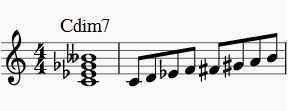
The “half/whole diminished scale” works over a dominant seventh with a flat nine and/or sharp nine chord. This is why some people call it the “dominant diminished scale”. Let’s analyze the notes in the scale and see how they relate to the chord. The notes in the scale, in ascending order, are: 1, b9, #9, 3, #4 (#11), 5, 6 (13), and b7. So, every note in this scale is part of a dominant thirteenth with a flat nine, sharp nine, and sharp eleven chord.
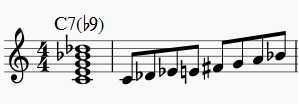
I suggest playing these chords on piano and playing the diminished scale over them, so you get the sound in your ear. You can also arpeggiate the chord and then play the scale.
Scale Patterns
Here’s where the “endless possibilities” part that I talked about in the intro is revealed. We now know the construction of the diminished scale and how to apply it to chords. But we don’t always want to just run the diminished scale whenever we see a chord that it fits over. That’s boring. We can manipulate the scale to make it sound more interesting. Think about practicing the major scale. You probably have certain exercises you practice. Maybe you run the major scale, then practice it in thirds, practice it in diatonic triads, etc. You can do all of these with the diminished scale as well.
In addition, here are a few public domain diminished scale patterns:



These are just a few examples of seemingly endless possibilities. I’m still discovering new patterns. The second example is an extremely popular pattern in jazz. If you listen to a lot of jazz, I can guarantee you’ll hear it everywhere.
Application to Improvisation
You can probably figure out now how to apply the diminished scale to improvising on jazz tunes, but, to be thorough, I’ll provide an example. Whenever you see or hear one of the chords from above, you can use the diminished scale. There are many popular jazz tunes that have dominant seventh flat nine chords. A few of these tunes are “Autumn Leaves”, “Alone Together”, “Stella By Starlight”, “Softly, as in a Morning Sunrise”, “What Is This Thing Called Love”, etc. As an example, I’ve decided to use the tune “Woody ‘N You”. “Woody ‘N You” utilizes dominant seventh sharp nine chords in three different keys in the ‘A’ sections. The ‘A’ sections use all of the diminished scales. It’s common in jazz to blanket the diminished scale over a whole “ii-7(b5) – V7(#9)” progression. I think of the root of the V7(#9) chord and use the “half/whole diminished scale”. In the provided example, I used the first example from the previous section. You can apply the other two examples as well. Also, try searching for more diminished scale patterns to apply, or come up with your own. There are plenty of resources to find these.
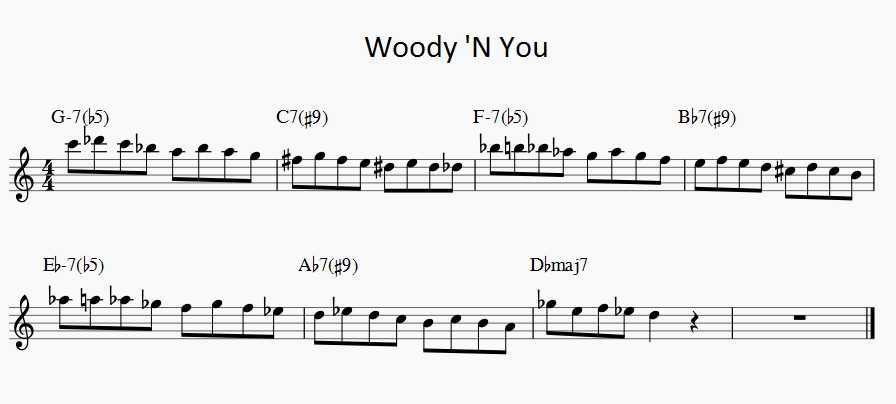
Also, I want to emphasize what I said above. “Whenever you see or hear one of the chords from above…” Jazz is aural. There are plenty of lead sheets where you simply see a dominant seventh chord. You, as the soloist, and/or the rhythm section are able to substitute a dominant seventh with a flat nine in its place. Whenever you see or hear a dominant seventh chord, you can add whatever upper extensions you want. Therefore, the diminished scale can be applied to almost every jazz tune.
Conclusion
The diminished scale one of the defining scales of jazz. It’s one of those sounds you’ll hear all the time as a jazz player. This article is meant to provide an introduction to the scale and how to begin to apply it to real life playing situations. I suggest you seek out more resources to get an advanced understanding. Ask your teacher about the diminished scale.
In the following weeks, each one of my blog posts will focus on a different scale that is commonly utilized in jazz. As always, happy practicing.




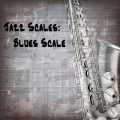



I find these materials very helpful and would love to have them be apart of my playing. I always have a problem with which jazz scales go with the chords